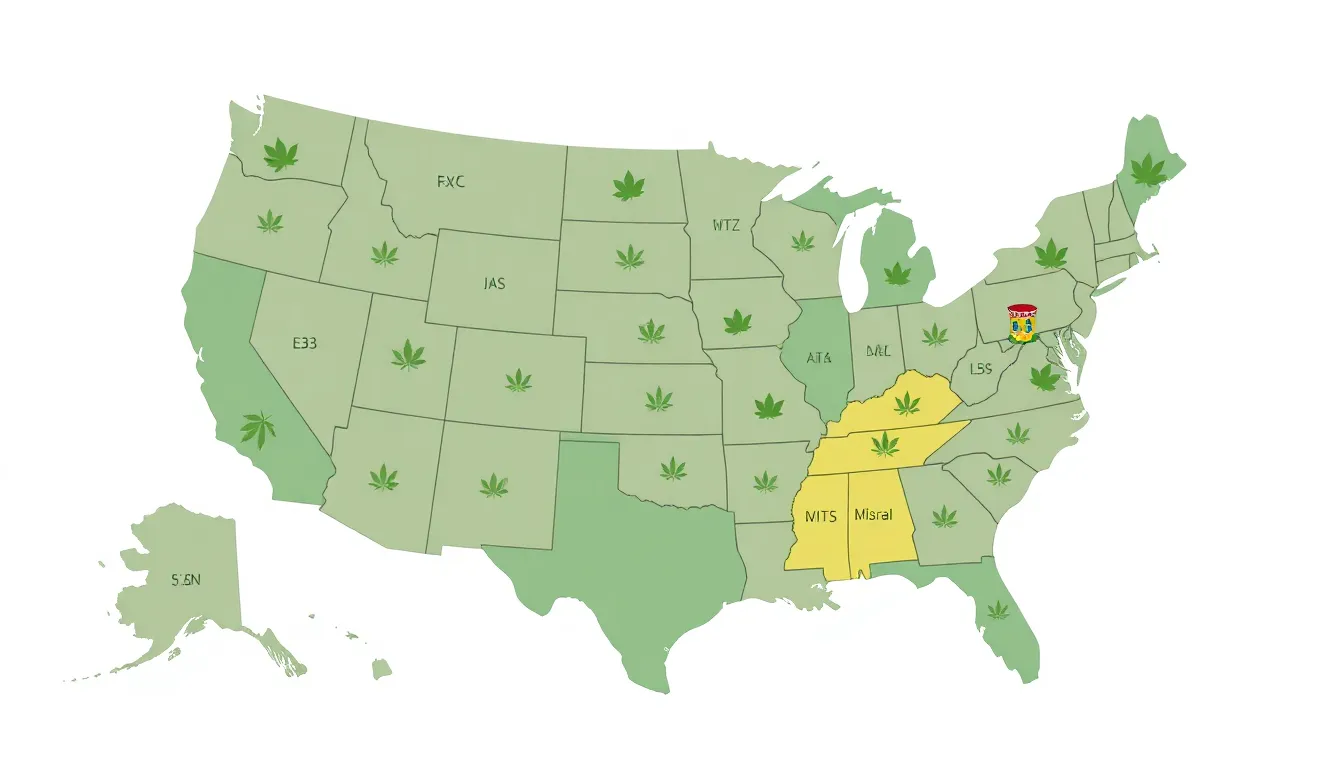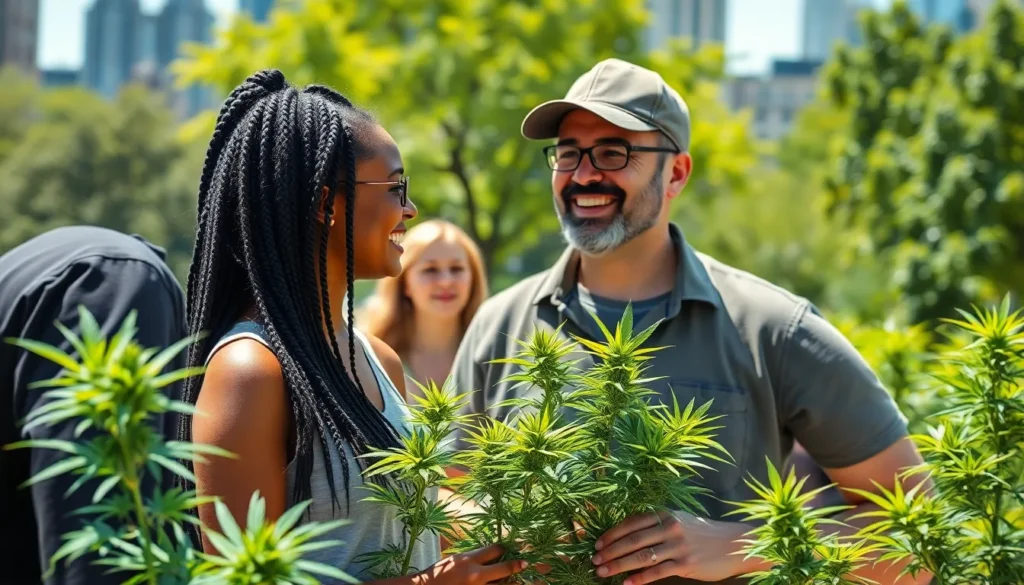Table of Contents
ToggleAs 2024 approaches, the landscape of marijuana legalization in the United States continues to evolve. With growing public support and changing attitudes towards cannabis, more states are embracing legalization for both medical and recreational use. This shift reflects a significant transformation in policy and societal norms surrounding marijuana.
Currently, a record number of states have legalized marijuana in some form, paving the way for new economic opportunities and regulatory frameworks. Understanding how many states have adopted these changes is crucial for those interested in the implications for health, law, and business. As the conversation around marijuana unfolds, staying informed about the latest developments is essential for anyone navigating this rapidly changing environment.
Overview of Marijuana Legalization
Marijuana legalization in the United States has expanded significantly as of 2024. Currently, 23 states and the District of Columbia have legalized recreational marijuana. Additionally, 38 states allow cannabis use for medical purposes.
Legislation varies by state, addressing various aspects such as possession limits, distribution channels, and age restrictions. States like California and Colorado set benchmarks for regulations, providing models for other states. Each state’s approach impacts local economies through job creation, tax revenues, and criminal justice reform.
Public support for legalization has risen sharply, driven by awareness of marijuana’s potential benefits and recognition of the adverse effects of prohibition. Surveys indicate over 60% of Americans favor legalization. This growing acceptance influences policy changes and encourages more states to consider similar legislation.
As states navigate this evolving landscape, the legal status of marijuana continues to transform. Significant events, such as ballot initiatives and legislative sessions, are crucial in shaping future cannabis policies. Stakeholders closely monitor these developments, as they hold implications for health, economics, and social justice.
Current Marijuana Legalization Status in 2024


As of 2024, marijuana legalization continues to evolve across the United States, with a range of regulations reflecting varying attitudes toward cannabis use.
States Where Marijuana Is Fully Legal
Currently, 23 states and the District of Columbia have fully legalized recreational marijuana. These states, including California, Colorado, and Illinois, allow adults aged 21 and over to possess and use cannabis for recreational purposes. Each state sets its own possession limits, which typically range between 1 ounce to 2.5 ounces per adult. Legal sales occur through licensed dispensaries, generating significant tax revenues that support public initiatives like education and infrastructure. Additionally, states often provide frameworks for cultivation and distribution, which ensure safety and regulation within the market.
States Where Marijuana Is Legal for Medical Use Only
A total of 38 states permit marijuana for medical use only. States such as Florida, Pennsylvania, and New York have established medical marijuana programs that require patients to obtain a recommendation from a licensed healthcare provider. Patients typically register with a state program to receive a medical marijuana card, enabling them to purchase cannabis from authorized dispensaries. Regulations vary, with limitations on the number of approved medical conditions for marijuana use and specific purchase quantities. Some states permit home cultivation for medical patients, while others restrict it to dispensary sales.
Impact of Legalization on Society
Legalization of marijuana has significantly influenced various aspects of society, including economic, health, and social dynamics.
Economic Benefits
Marijuana legalization creates notable economic advantages. States with legalized cannabis report increased tax revenues, often exceeding hundreds of millions annually. For instance, Colorado generated over $400 million in tax revenue in 2021, funding education and infrastructure projects. Legal dispensaries create job opportunities, contributing to local employment rates. In addition, the cannabis industry stimulates businesses in agriculture, transportation, and retail. Regions with robust cannabis markets also see a surge in tourism, attracting visitors interested in cannabis-related experiences, further boosting local economies.
Public Health Considerations
Legalization affects public health by changing access to marijuana and its usage patterns. Access to regulated, quality cannabis products reduces the risks associated with illegal markets, such as contaminants and unsafe products. Medical marijuana legalizations in 38 states enable patients to obtain cannabis safely, improving health outcomes for conditions like chronic pain and PTSD. Furthermore, studies show reduced opioid prescriptions and associated risks in states with legalized medical marijuana. However, concerns remain regarding increased usage among youth and impaired driving. As such, ongoing education and regulation are vital in managing these public health challenges.
Future Trends in Marijuana Legalization
Future trends in marijuana legalization indicate a sustained trajectory toward broader acceptance and regulatory frameworks. Increasing public support for cannabis use, with surveys showing over 60% approval rates, drives state legislatures to consider legalization bills. States that previously adopted medical marijuana laws are now exploring recreational legalization options, reflecting evolving societal attitudes.
States may consider comprehensive reform, including expungement of past convictions related to cannabis offenses. As more states like California and Michigan lead this effort, others follow suit, aiming to address historical injustices and embrace social equity.
The economic ramifications remain significant. The legal cannabis market is projected to exceed $40 billion by 2024, fueled by consumer demand and investment opportunities. As new states adopt legalization, they generate tax revenue and create job openings, ranging from cultivation to retail, fostering economic growth.
On the public health front, trends suggest an emphasis on safety and regulation. States may implement stricter quality control measures for cannabis products, minimizing health risks associated with unregulated markets. Education campaigns focusing on responsible use, especially among youth, will likely gain prominence.
Additionally, states can leverage technological advancements to streamline processes, including licenses and sales transactions. Innovations in delivery services and online dispensaries may enhance access for consumers, increasing market participation.
Overall, future trends in marijuana legalization reflect a dynamic landscape with promising developments across legislative, economic, and public health realms. Stakeholders must navigate these trends, ensuring they optimize the benefits of legalization while addressing challenges and concerns.
Marijuana legalization is rapidly evolving across the United States as 2024 approaches. With more states embracing both medical and recreational use, the landscape is shifting towards broader acceptance. This change brings economic benefits through tax revenues and job creation while addressing public health concerns with regulated access to cannabis products.
As societal attitudes continue to evolve, it’s crucial for individuals to stay informed about ongoing developments in cannabis legislation. The future promises further reforms and potential expansions in legalization efforts, highlighting the importance of understanding these changes for both economic and social implications. The journey toward comprehensive cannabis policies is just beginning, and staying updated will be essential for navigating this dynamic environment.




